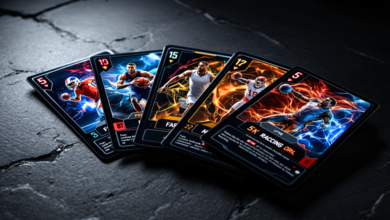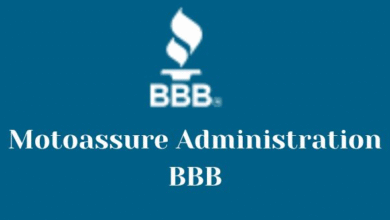Everything You Need to Know About 6094104598 – Mystery Calls, Safety Tips, and Public Reports

If you’ve recently received a call from 6094104598, you’re not alone. This number has appeared on countless phones across the United States, often sparking confusion, concern, or curiosity. Whether the call went unanswered or you picked it up only to hear silence or a brief message, it’s worth examining the possible origins, intentions, and reputation of this specific phone number. In this article, we will explore everything known about 6094104598, including user reports, potential dangers, and ways to protect yourself from unknown or suspicious calls.
Where Does 6094104598 Come From?
The phone number 6094104598 uses the 609 area code, which is associated with New Jersey. Specifically, this area code serves parts of central and southern New Jersey, including areas like Trenton, Princeton, and parts of the Jersey Shore.
While the area code itself is legitimate and widely used, the number 6094104598 has not been clearly linked to any official company or government agency. This ambiguity is one reason why so many people are searching for more information about it.
Common User Reports About 6094104598
Online forums, complaint boards, and call review websites have collected numerous user experiences involving 6094104598. Based on those reports, here are the most common patterns:
-
Repeated Calls: Many users say they’ve received multiple calls from the number, sometimes even several times a day.
-
No Voicemail Left: In most cases, the caller does not leave a voicemail message, which is a red flag for spam or robocalls.
-
Silence or Hang-Ups: People who do answer the call often report silence, immediate disconnection, or strange background noise.
-
Robotic Messages: A few users mention receiving pre-recorded or robotic messages that attempt to impersonate banks or service providers.
-
Suspicious Questions: Some claim the caller asked for personal details, such as Social Security numbers or bank account access—an obvious sign of a potential scam.
Possible Sources of the 6094104598 Calls
Telemarketing and Robocalls
The most likely explanation for 6094104598 is that it belongs to a telemarketing system or robocaller. Automated dialing systems are programmed to contact thousands of people daily, often cycling through phone numbers using local area codes to appear more trustworthy.
These calls might try to sell products, offer fake “free vacations,” or conduct fake surveys. Most of the time, they are more annoying than dangerous, but some may try to lead you into a scam if you respond.
Phishing Scams
Some users believe that 6094104598 is tied to phishing attempts. This means the caller might try to trick you into revealing sensitive information like:
-
Credit card numbers
-
Login credentials
-
Personal ID numbers
-
Medicare or insurance info
Phishing scams via phone, also known as “vishing” (voice phishing), are increasingly common. The goal is always to gain access to your money, identity, or accounts.
Debt Collection Attempts
Another possibility is that the number 6094104598 is from a debt collection agency. Some of these agencies use aggressive or misleading tactics to get people to answer. They may spoof numbers to hide their real identity and call persistently until someone picks up.
Even if you do have a debt, it’s important to verify the identity of any collector before responding. Ask for written validation and never give out financial details over the phone without verification.
Spoofed Calls
It’s entirely possible that the number 6094104598 is being spoofed. Call spoofing is when scammers use fake numbers to appear local or legitimate on your caller ID. You might see a New Jersey number, but the call could actually be coming from a scammer halfway across the world.
Spoofing is one of the most dangerous aspects of modern scam techniques, as it bypasses your natural suspicion by disguising itself as someone familiar.
Is 6094104598 Safe?
Based on most user reports and data from public spam reporting websites, 6094104598 is not considered a safe number. While it hasn’t been tied to violent crimes or high-level identity theft, the behavior of this number aligns with classic signs of robocalls and scams.
-
Calls at odd hours
-
No voicemail left
-
Silent or dropped calls
-
Repeated daily calls
These are all warning signs that you should not engage with the caller.
What Should You Do If 6094104598 Calls You?
If you receive a call from 6094104598, here are some important steps to follow:
Don’t Answer Unknown Numbers
If you don’t recognize the number, it’s best not to answer. Let it go to voicemail. Legitimate callers will usually leave a message explaining who they are and what they need.
Block the Number
If you determine that 6094104598 is unwanted or potentially harmful, block the number using your smartphone’s settings. On both Android and iPhone, you can easily block numbers in the call history.
Report the Call
You can report spam or scam calls from 6094104598 to the following organizations:
-
Federal Trade Commission (FTC): www.reportfraud.ftc.gov
-
Federal Communications Commission (FCC): www.fcc.gov/complaints
-
Better Business Bureau (BBB): www.bbb.org
These reports help authorities monitor patterns and potentially take action against scammers or repeat offenders.
Use Call Protection Apps
There are numerous apps designed to protect you from spam and scam calls:
-
Hiya
-
Truecaller
-
RoboKiller
-
Nomorobo
These apps identify incoming spam calls in real time and automatically block them before they reach you.
Never Share Personal Information
Whether it’s 6094104598 or any other unknown caller, never provide personal, financial, or medical information over the phone unless you are 100% sure of the caller’s identity. If you’re unsure, hang up and call back using a verified number.
How to Perform a Reverse Lookup on 6094104598
If you’re curious about the number 6094104598, several websites offer reverse phone lookup services. These include:
-
Whitepages
-
Spokeo
-
BeenVerified
-
AnyWho
While results may vary, these platforms can sometimes give you clues such as location, name, or type of phone line (landline, mobile, VoIP).
Keep in mind that many spam callers use temporary or masked numbers, so reverse lookup tools may show limited or misleading information.
Read also: spellmistake.com – The Ultimate Free Tool to Perfect Your Writing in Seconds
Conclusion
Receiving a call from 6094104598 can be unsettling, especially when there’s no clear explanation. Based on multiple sources and reports, this number appears to be associated with telemarketing, robocalls, or potentially even scams. Although it uses a valid New Jersey area code, its behavior is suspicious.
Protecting yourself is key. Don’t answer unknown calls, block suspicious numbers, and report anything that feels wrong. In today’s world, phone scams are sophisticated—but with the right knowledge and tools, you can avoid falling into their traps. If 6094104598 appears on your phone, treat it with caution, and stay safe.



